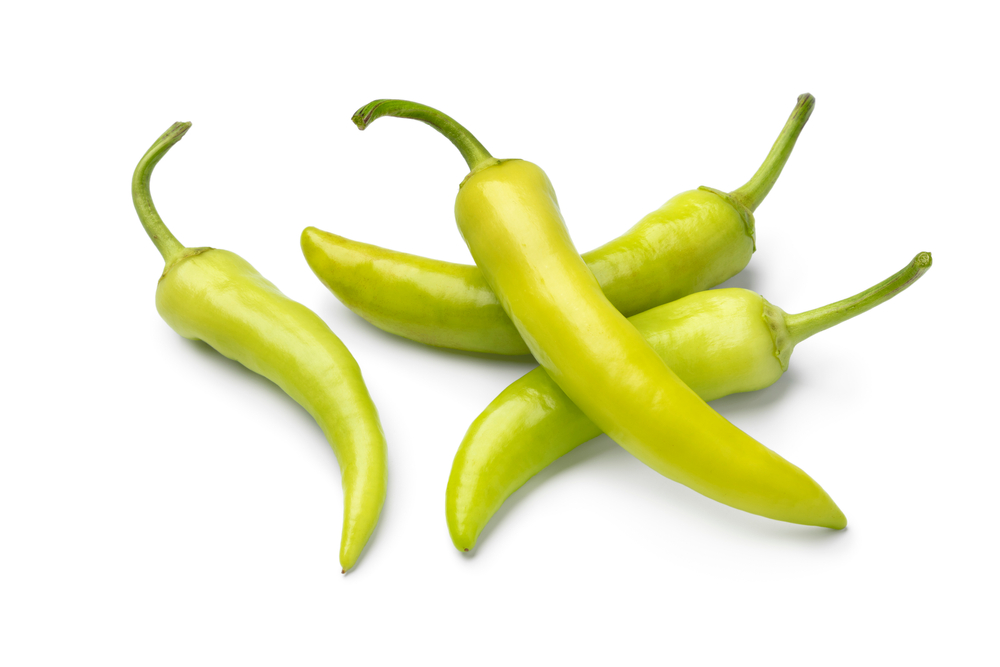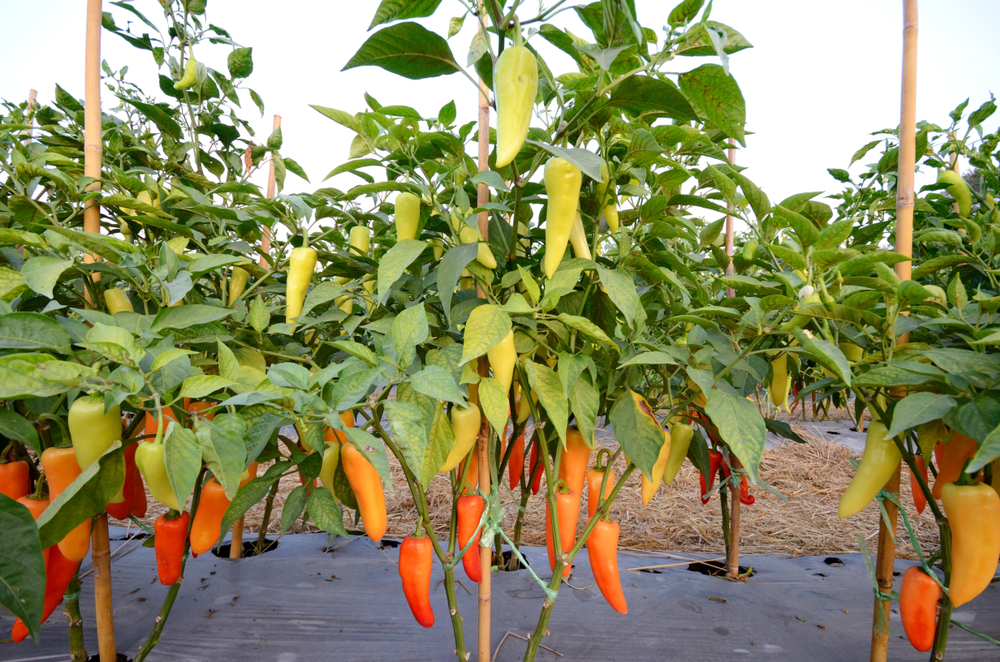While Hungarian wax peppers can be easily confused with banana peppers in looks, they are as spicy (or spicier!) as the average jalapeno. Hungarian wax peppers have a thick skin, and the yellow unripe pepper pickles well. When left to ripen, the peppers turn a bright red, and the spice level increases significantly.
What Are Hungarian Hot Peppers?
The Hungarian wax pepper is also called Hungarian hot wax pepper, Hungarian hot chile, Hungarian hot yellow pepper, or chile hungaro (Spanish). They have a sweet, tangy flavor with a kick of heat depending on how long they’re left to ripen.
Hungarian hot wax peppers are a cultivar cross between mild hot chile peppers introduced to Hungary in the 16th century by Turks and mild banana peppers native to Hungary.
Hot peppers brought by the Turks were initially called Turkish red peppers or Turkish hot peppers. The Hungarian hot wax cultivar was developed in Hungary, and many Hungarian farmers grew it over the centuries, turning it into a national heirloom. It was introduced to the US in the early 1930s.
The mild to medium-hot Hungarian wax pepper belongs botanically to Capsicum annuum, the plant species that also bears spicy and sweet pepper varieties like jalapenos and bell peppers.
Hungarian hot wax peppers grow 4-6 inches long and 1-2 inches wide. They are large peppers with a banana-like shape, which is elongated and tapers to a blunt, rounded tip.

Most people harvest wax peppers when they are yellow before they mature completely. The peppers turn red when fully mature and are spicier.
The skin of the conical-shaped peppers has a smooth, waxy texture, hence the name wax pepper. The peppers are crunchy and have thick flesh.
Nutritionally, Hungarian hot wax peppers are a good source of manganese, copper, potassium, magnesium, folate, and vitamins C, B6, and K.
How Hot Are Hungarian Wax Peppers?
Hungarian wax peppers generally range between 5,000 and 10,000 Scoville Heat Units on the Scoville Scale.
However, the actual range is 1,000-15,000 SHU since different varieties of pepper have varying heat levels.
To put this range in context, some Hungarian wax chiles can have the same mild spice level as Anaheim peppers (500-1,000 SHU). They are roughly twice as hot as the average jalapeno at the top of the range. But they’re still significantly less spicy than the cayenne and habanero (100,000-350,000 SHU).
Hungarian Wax Peppers In Cooking
You can use Hungarian wax peppers pickled, roasted, fresh, or dried in powder form.
If you love Hungarian cuisine, you can use paprika in stews, marinades, and soups. It’s also the star ingredient in goulash, a famous Hungarian dish.
Pickling the peppers enhances the flavor. The peppers can be pickled whole or sliced into small rings for more consistency in their taste. They work well on sandwiches, salads, stir-fries, pizza, dips, and in sauces.
Because of the thick skin, Hungarian wax peppers are also great for stuffing and grilling or roasting.

Are Hungarian Wax Peppers Hotter Than Jalapenos?
The heat level of the average Hungarian wax pepper exceeds that of the jalapeno pepper, whose heat ranges between 2,500 and 8,000 SHU.
However, considering that you might land on a Hungarian wax pepper variety with a Scoville Scale value as low as 1,000, your 2,500-SHU jalapeno will be hotter in this case.
The same consideration works for the higher end of the spectrum—a 15,000-SHU wax pepper will be almost twice as hot as an 8,000-SHU jalapeno.
Are Hungarian Wax Peppers The Same As Banana Peppers?
Hungarian wax peppers aren’t the same as banana peppers, but the two are close relatives.
The wax peppers were developed in Hungary as a cross of the native banana peppers and the hot chili peppers introduced to the country by Turkish invaders.
The confusion between the two peppers arises from their appearance—the waxy texture, banana-like shape, and yellow color before they ripen.
The Hungarian wax pepper is hotter than its banana pepper relative, which has a Scoville Scale value of only 500.
Is Hungarian Hot Paprika Made From Hungarian Wax Peppers?
The Hungarian wax pepper is believed to be the first pepper in paprika, the famous Hungarian spice.
Today, paprika is Hungary’s national spice and is made using various ground, roasted, and dried peppers with varying flavors and degrees of hotness.
Where To Buy Hungarian Wax Peppers
You can buy hot Hungarian yellow peppers from any of the following places, though availability at each isn’t always guaranteed:
- Supermarkets
- Specialty chili farms
- Specialty grocery stores
- Farmers’ markets
- Online outlets (mainly seeds, plants, and dried/powder)
Can You Grow Hungarian Wax Peppers?
You can grow your own Hungarian wax peppers in a home garden. They are also cultivatable in containers.
Hungarian hot wax pepper seeds and pepper plants are available online and at local nurseries. If you prefer the germination route, you can buy seeds and start them indoors 8-10 weeks before the last frost.
Hungarian wax chilis have an annual lifecycle and do well in well-drained soils and warm climates with lots of sun and minimal fluctuations in wind and temperatures.
Do not overwater your wax peppers, or they’ll get moldy. They will also dry up if you leave them dry for prolonged periods.
Substitutes For Hungarian Wax Peppers
There are several substitutes for Hungarian wax peppers if you are looking for mild to medium peppers:
- Pepperoncini
- Banana peppers
- Fresno chilies
- Cascabella peppers
- Poblanos
- Jalapenos
- Serrano peppers (hotter)

